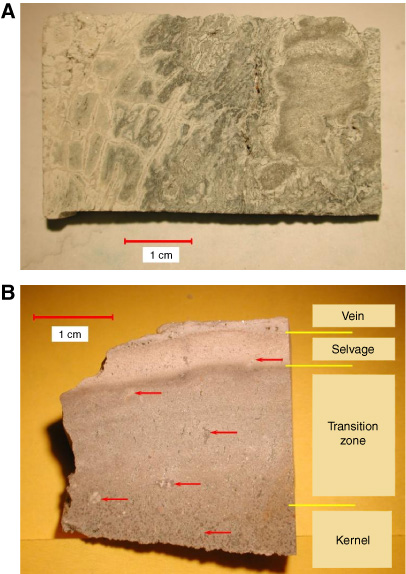
Figure F8. A. Pyrophyllite-dominated acid sulfate alteration (very pale grey) on the left appears at first sight to be superimposed via a fracture set on earlier greenish illite-chlorite alteration (with patchy coloration arising from perlitic structure). Petrographic evidence cited in the text, however, suggests instead that the two alteration styles are contemporary or that the acid sulfate alteration was the earlier (Sample 193-1188A-9R-3 [Piece 2, 22–26 cm]; 70.73 mbsf; CSIRO 142654). B. A relatively simple example of pale selvage structure adjacent to an anhydrite vein cutting altered mafic dacite. The illite-quartz-anhydrite selvage (see Fig.
F7C) contains no chlorite and little pyrite. A laminated transition zone with pyrite and subdued chlorite has a sharp border against the selvage and grades into the illite-chlorite-quartz-pyrite kernel (see Fig.
F7B). The brown zone at the lower border of the selvage arises from presence of "waxy illite" (see text). Plagioclase phenocrysts (arrows) are fresh or partly altered in the kernel zone but totally altered to illite in the transition zone and selvage, their outlines becoming increasingly indistinct. Despite first appearances of overprinting, it is argued that the selvage alteration preceded kernel alteration (see text) (Sample 193-1188F-26Z-1 [Piece 4, 62–64 cm]; 300.72 mbsf; CSIRO 142684).


![]()